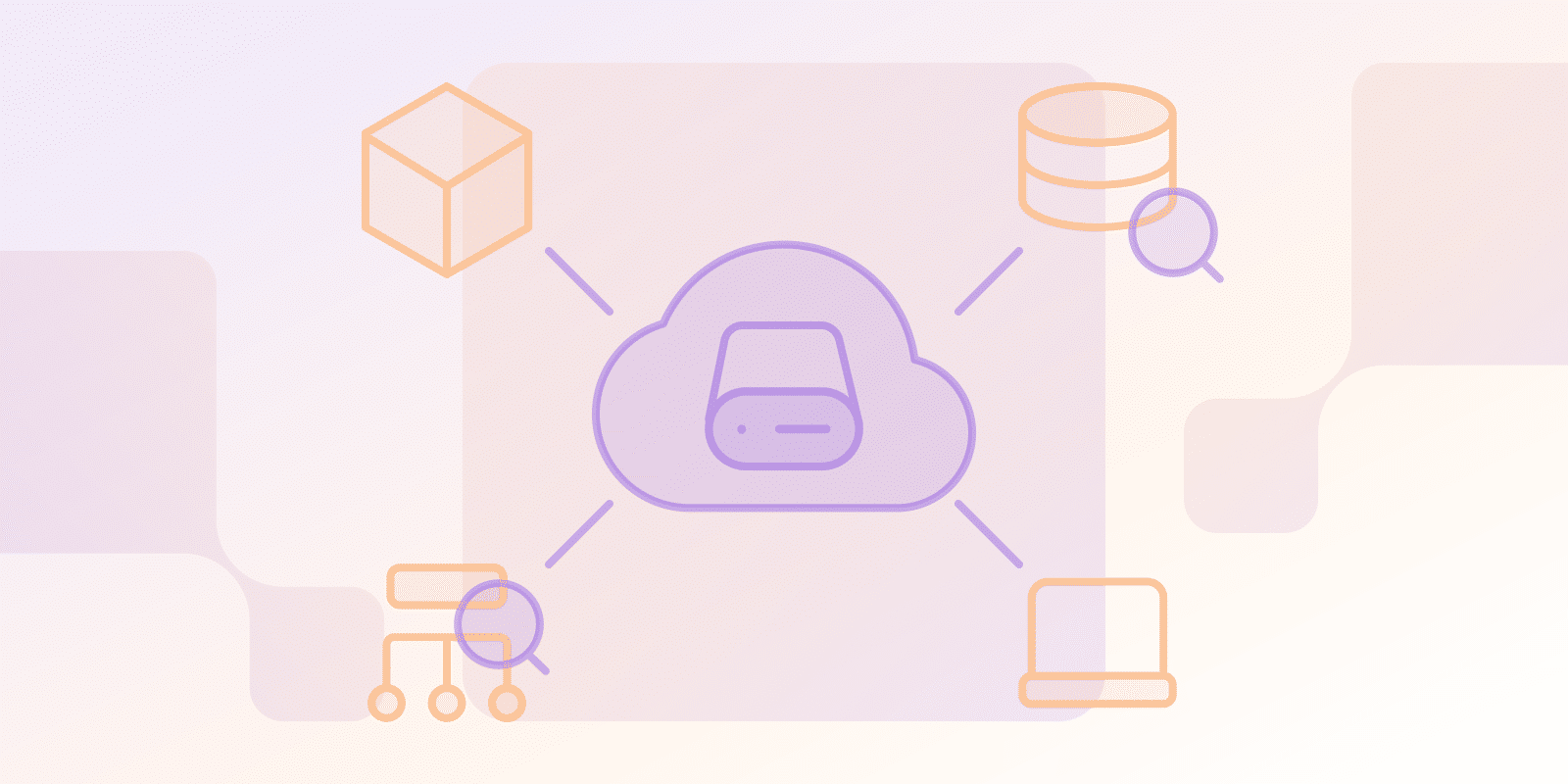クラウドコスト最適化
クラウドモニタリングとは
公開日: 2024年10月16日
最終更新日: 2025年2月4日

クラウドモニタリングとは
クラウドモニタリングとは、クラウドベースのアプリケーションとインフラストラクチャのパフォーマンスとリソース使用状況を継続的に追跡して分析するプロセスです。
これには、最適なパフォーマンスを確保し、潜在的な問題がエスカレートする前に特定するために、CPU使用率、メモリ使用率、ネットワークトラフィックなどの主要な指標を監視することが含まれます。
クラウドモニタリングとオブザーバビリティの主な違いは何ですか?また、それらは効率的なクラウド使用管理にどのように貢献しますか?
クラウドモニタリングとは、クラウドリソースとそのパフォーマンスを監視するプロセスであり、CPU使用率、メモリ使用率、ネットワーク使用率などの主要なクラウドメトリクスを監視することも含まれます。このプロセスは、潜在的な問題の検出とアプリケーションの適切な動作の確認に役立ちます。
オブザーバビリティは、アプリケーションとその依存関係がどのように機能するかについての深い洞察を提供します。コンポーネントの相互作用を分析することは、潜在的な問題をエスカレートする前に特定して対処し、システムの安定性と効率を確保する上で重要な役割を果たします。
クラウドモニタリングとオブザーバビリティにより、クラウド環境に関するデータを収集して分析できます。
- 非効率性の特定: リソースを大量に消費するプロセスや、最適に使用されていない資産を特定します。
- パフォーマンスの最適化: アプリケーションを調整して、速度と応答性を向上させます。
- 停止を防ぐ: 大きな問題に発展する前に、介入が必要な領域を特定します。
- 情報に基づいた意思決定を行う: コスト最適化手順を導くために、データを収集して実行可能な洞察に変換します。
クラウド監視ツールを活用してリアルタイムの洞察を得るにはどうすればよいですか?
クラウドモニタリングツールは、クラウドサービスの利用状況に関するリアルタイムデータのソースを提供します。ダッシュボードとレポートを利用することで、データを分析して傾向、外れ値、改善の機会を明らかにできます。
クラウドモニタリングツールを効果的に使用する方法を以下に示します。
- カスタムアラートを設定する: リソース使用量が設定されたしきい値を超えた場合、アラートにより迅速な調整が可能になります。
- コストの傾向を追跡する: 支出を追跡して、変更の領域に注意できるようにします。
- パフォーマンス指標を分析します。 コードとリソース使用におけるパフォーマンスの制限を見つけ、アプリケーションに必要な調整を行います。
- 将来の使用を予測します。 必要なリソースの要件を見積もり、必要以上のリソースが提供されないようにします。
| 機能 | 手動監視 | クラウド自動監視 |
|---|---|---|
| パフォーマンス追跡 | ||
| リアルタイムインサイト | 限定的で時間がかかる | 即時かつ包括的 |
| メトリクス監視 | 散発的で矛盾した | 継続的で正確な |
| コスト管理 | ||
| コスト追跡 | 遡及的分析 | プロアクティブなコスト最適化 |
| リソースの割り当て | 静的で非効率な | 動的で適応性のある |
| エラー防止 | ||
| エラー検出 | 事後対応的な問題解決 | 予測的な問題特定 |
| アラートメカニズム | 手動しきい値設定 | 自動化されたインテリジェントアラート |
自動化はクラウド使用の監視においてどのような役割を果たし、どのように実装してコスト最適化の取り組みを合理化できますか?
クラウドコンピューティングのコストの最も重要な側面の 1 つは自動化です。リソースの割り当て、スケーリング、デプロビジョニングなどのアクティビティの自動化から、次のことが可能になります。
- 人的ミスを削減: プロセスの自動化により、手動入力によって発生する可能性のあるコストのかかるエラーが発生する可能性が低くなります。
- 効率を向上: チームが戦略的な問題に時間を割けるように十分な時間を確保します。
- 適応型リソースの割り当て: 需要の変動に応じてリソースを自動的にスケーリングするメカニズムを実装し、最適なパフォーマンスとコストのバランスを目指します。
自動化を実装するために講じることができる対策を以下に示します。
- インフラストラクチャ・アズ・コード (IaC): インフラストラクチャはコードで定義する必要があります。そうすることで、自動化と再現が容易になります。
- 自動スケーリング: 柔軟性のために、使用量に応じて課金される、スケールアップとスケールダウンが可能なリソースを使用します。
- スケジュールされたスケーリング: リソースの可用性と使用率を使用して、既知のピーク時、休憩時間、週末に調整の時間と頻度をスケジュールします。
過剰支出を防ぎ、最適なリソースの割り当てを確保するために、効果的なクラウド使用量のしきい値とアラートをどのように確立できますか?
予期しない費用を回避し、効率的なリソースの使用を確保するために、明確なしきい値とアラートを設定することが不可欠です。効果的に行う方法に関するガイドラインを以下に示します。
- 履歴データを分析します。 これは期待を現実的にするために重要であり、通常の活動シーケンスに従って境界を設定することで行うことができます。
- さまざまなリソースのアラートを設定します。 CPU、RAM、ディスクストレージ容量、ネットワーク接続帯域幅の利用率を正確に定義します。
- 階層型アプローチを使用します。 重大度に応じて適切な対応ができるよう、さまざまな重大度レベルを設定することが重要です。
- 定期的に監視します。 現在の状況に対する効率と関連性を判断するために、しきい値とアラートを定期的に確認することが重要です。
クラウド使用状況データを定期的に確認し、アラーム設定の適切性を検証することで、潜在的な問題に対処する際の応答時間を短縮し、大幅なコスト増加を防ぐのに役立つ可能性があります。
予算に影響が出る前に、クラウドコストの異常を先回りして特定して対処するための最も効果的な戦略は何ですか?
コスト最適化戦略 クラウドコンピューティング 将来このような衝撃を避ける唯一の方法です。検討できる戦略をいくつか紹介します。
- 請求レポートを定期的に確認します。 使用パターンや請求金額の異常を検索します。
- コスト異常検出ツールを使用します。 収集したデータの分析に AI アプリケーションを活用し、異常が検出されたときにシグナルを出します。
- 異常を迅速に調査します。 各逸脱のコピーを作成する必要があります。常にその理由を把握し、可能であれば解決する必要があります。
- リソースの利用を最適化: リソースの使用を最適なレベルまで制御し、十分に活用されていないリソースは破棄します。
- あなたのレビュー 価格モデル: さまざまな価格形態のサービスに適している場合は、価格プランに移動します。
結論
クラウドコストの最適化は、クラウドを利用するすべての組織にとって不可欠です。支出額、標準手順の遵守状況、費用の大幅な削減に役立つツールを把握する必要があります。